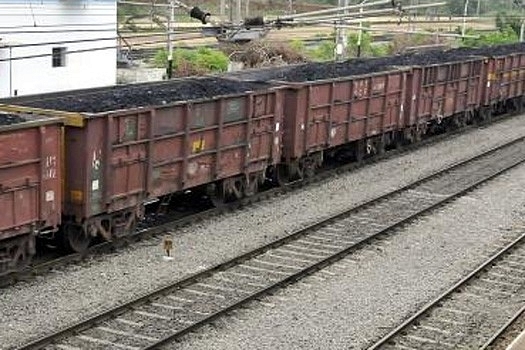Business
The India Freight Story: One Big Reason For The Railways To Cheer About
- Incremental freight loading month on month is crucial for the Railways in bridging the usual gap between earnings targets.
- And this is good news specially, since this is an election year and there is little chance of the government agreeing to any passenger fare hikes.

Coal traffic shows considerable increase. (The Financial Express)
In May this year, the Indian Railways (IR) reported incremental earnings of Rs 773 crore over the same month last year, by loading more freight. If one were to take both April and May into account, incremental freight earnings stood at Rs 1,808 crore or an average of about Rs 30 crore more each day of this fiscal compared to the same period last fiscal. The freight story of IR is taking a turn for the better and if the incremental earnings continue at this rate, the transporter may have one less reason for worry over its messy finances. Though similar optimism is missing in passenger earnings, which have dipped in the last two months by almost Rs 35 crore compared to the same period last year, the happy freight story is certainly something to cheer about.
Incremental freight loading month on month is crucial for the Railways in bridging the usual gap between earnings targets, which it sets out in the beginning of the fiscal year, and actual earnings. These incremental freight earnings will also help the Railways keep a check on the operating ratio. Specially, since this is an election year and there is little chance of the government agreeing to any passenger fare hikes.
This piece shows how increased loading of coal, which accounts for almost half the freight basket for the Railways, during April and May helped matters. There was a 7.26 per cent rise in freight traffic with coal traffic showing considerable increase because of rise in power demand in the last two months. So originating loading was 199.9 million tonnes (MT) against 186 MT during the same time last year, or an incremental growth of 13.53 MT. Out of this, coal traffic saw the maximum increase of 17.4 per cent to 101.66 MT (86.61 MT), which comes after a rise in domestic coal demand.
The IR has already reported record freight haulage in 2017-18 at 1162 tonnes, which is 53 million more than the previous fiscal (1109 million tonnes in 2016-17). And buoyed by this continued success, it is now eyeing 2,000 million tonnes of freight loading by 2022-23 against just 1,160 million tones achieved last fiscal, an increase of over 72 per cent in five years. Of course, the success of this ambitious target hinges primarily on a huge increase in coal haulage. As of now, annual coal loading is around 555 million tonnes, but the projection for 2022-23 is almost three times at 1,500 million tonnes.
This ambitious overall freight growth target also obviously necessitates a large order for wagons and the IR is looking to place an order of 1 lakh wagons by 2022-23 or about 15,000-18,000 each year till then. As on 1 April this year, an order for 18,000 wagons has been placed and another one for 22,000 wagons is in the works in the current fiscal itself, according to senior Railways officials.
Freight earnings account for almost 65 paise of every rupee earned by the Railways, and are used to subsidise passenger earnings, where the cost of transporting each passenger is double the earnings. So, good news on the freight front is good news for the Railways’ overall finances in 2018-19.
Remember, almost half the freight transported across the Railways network is coal and in 2017-18, 22 million more coal was transported at 555 million tonnes (533 million tonnes in 2016-17). Cement loading also increased by 10 million tonnes last fiscal compared to 2016-17. It is interesting to see that the efforts made to rationalise tariffs and myriad discounts have begun to bear fruit and continue to give Railways an advantage over roadways in the current fiscal too. Going forward, not just coal, increased traffic from cement and steel sectors, which are booming, besides iron ore and container traffic, should also help boost Railways’ freight earnings.
A senior official explained that the welcome rise in freight carriage and earnings has come after months of efforts to correct past mistakes where several policy initiatives have been taken. As a thumb rule, for goods to be transported up to about 450 km, roadways are more economical. So the use of Railways comes in only for longer distances. Over the last several years, a skewed tariff policy and some other issues pushed freight away from the Railways even though it had surplus capacity lying idle.
So the Railways took several measures: It offered 30-40 per cent discounts in the empty flow direction (where the cargo has been offloaded and the wagon has to return empty). This meant traffic in empty flow direction grew 208 per cent in loading and 212 per cent in earnings year on year last fiscal. A 20-30 per cent discount was offered to a host of commodities for certain kinds of wagons; a long term tariff contract was signed with 24 key customers last fiscal which enabled more freight loading as customers were assured of a stable tariff rate through the year. Some other discounts were also offered on specific commodities.
Introducing ElectionsHQ + 50 Ground Reports Project
The 2024 elections might seem easy to guess, but there are some important questions that shouldn't be missed.
Do freebies still sway voters? Do people prioritise infrastructure when voting? How will Punjab vote?
The answers to these questions provide great insights into where we, as a country, are headed in the years to come.
Swarajya is starting a project with an aim to do 50 solid ground stories and a smart commentary service on WhatsApp, a one-of-a-kind. We'd love your support during this election season.
Click below to contribute.
Latest